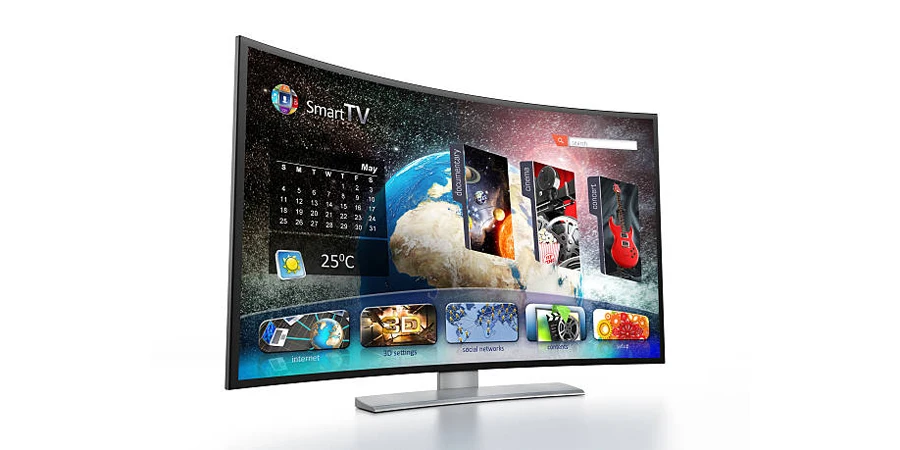Choosing the right curved smart TV is crucial for businesses that want to enhance their visual display capabilities. Curved smart TVs offer an immersive viewing experience by following the natural curvature of the human eye, which can significantly improve engagement during presentations and video conferences. With superior contrast, vibrant colors, and smart features, these TVs not only provide a stunning visual impact but also improve the clarity and depth of content. Selecting the best model ensures high-quality performance, reliable connectivity, and longevity, ultimately contributing to more effective communication and a professional image.
Table of Contents
1. Main Types and Usage of Curved Smart TVs
2. Current Market Overview
3. Key Factors to Consider When Selecting a Curved Smart TV
4. Leading Curved Smart TV Models of 2024
5. Conclusion

Main Types and Usage of Curved Smart TVs
Understanding Curved Smart TVs
Definition and Core Features
Curved smart TVs, characterized by their concave screens, are designed to enhance the viewer’s experience by mimicking the curvature of the human eye. This design aims to provide a more immersive and natural viewing experience, reducing the distortion and glare typically found in flat-screen models. Key features of curved smart TVs include high-definition resolutions such as 4K and 8K, smart capabilities with access to various streaming services, and advanced technologies like HDR (High Dynamic Range) and OLED (Organic Light-Emitting Diode) displays.
The Technology Behind Curved Screens
The technology that powers curved smart TVs is sophisticated and includes several innovations aimed at improving picture quality and viewer engagement. OLED technology, for instance, allows for perfect black levels and high contrast ratios, as each pixel can emit its own light and turn off completely when necessary. Additionally, Quantum Dot technology enhances color accuracy and brightness, making visuals more vibrant and true to life. The curvature of the screen helps focus the light towards the viewer, providing a uniform viewing experience from various angles.

Benefits of Curved Smart TVs
Enhanced Visual Experience and Immersion
One of the primary benefits of curved smart TVs is their ability to provide a more immersive viewing experience. The curvature of the screen envelops the viewer, creating a sense of depth and immersion that flat screens cannot match. This design is particularly beneficial in large-screen models, where the curve can enhance the perception of a panoramic view, making movies, sports, and video games more engaging.
Better Contrast and Depth Perception
Curved screens also offer superior contrast and depth perception. By directing light towards the viewer, curved TVs can produce deeper blacks and brighter whites, enhancing the overall picture quality. This feature is particularly noticeable in high-contrast scenes, where the enhanced depth perception can make images appear more three-dimensional and lifelike. This is especially beneficial for professional settings, where high-quality visuals are crucial for presentations and digital displays.
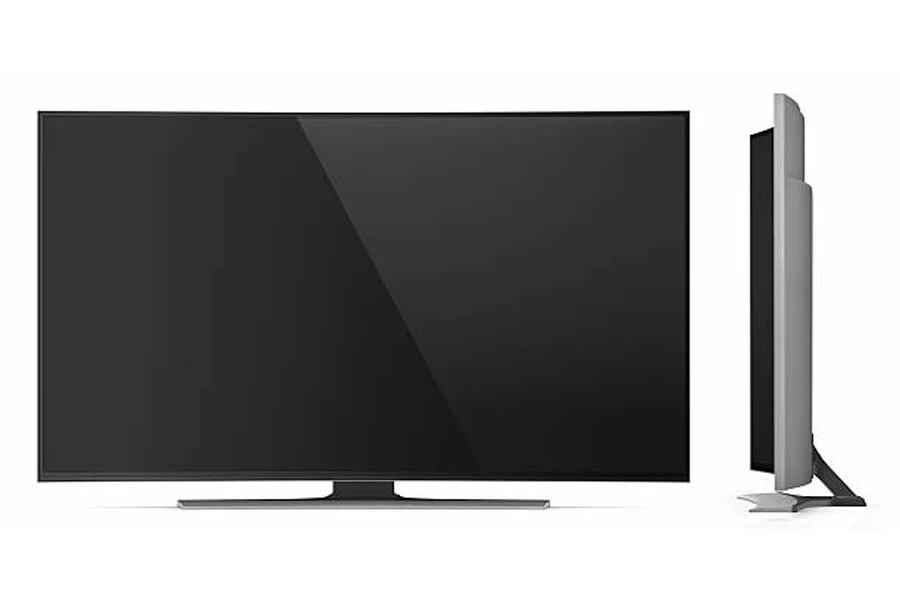
Common Applications
Usage in Professional Settings
In professional environments, curved smart TVs are used to create impactful visual displays. Boardrooms, conference centers, and digital signage installations benefit from the immersive qualities and high-resolution capabilities of curved TVs. The enhanced visual experience can improve engagement during presentations, make video conferences more lifelike, and ensure that digital signage captures attention effectively. The ability to display detailed and vibrant images also makes curved TVs ideal for showcasing products and services.

Home Entertainment and Gaming Advantages
For home entertainment, curved smart TVs offer a cinematic experience that enhances the enjoyment of movies, TV shows, and video games. The immersive quality of the curved screen brings viewers closer to the action, making every scene more vivid and engaging. Gamers particularly benefit from the reduced motion blur and high refresh rates that many curved TVs offer, ensuring smooth gameplay and a competitive edge. Additionally, the enhanced depth and contrast make virtual worlds more realistic, providing a superior gaming experience.
By understanding the main types, benefits, and applications of curved smart TVs, businesses can make informed decisions about integrating these advanced displays into their operations. Whether for professional use or enhancing home entertainment, curved smart TVs offer significant advantages that cater to various needs and preferences.
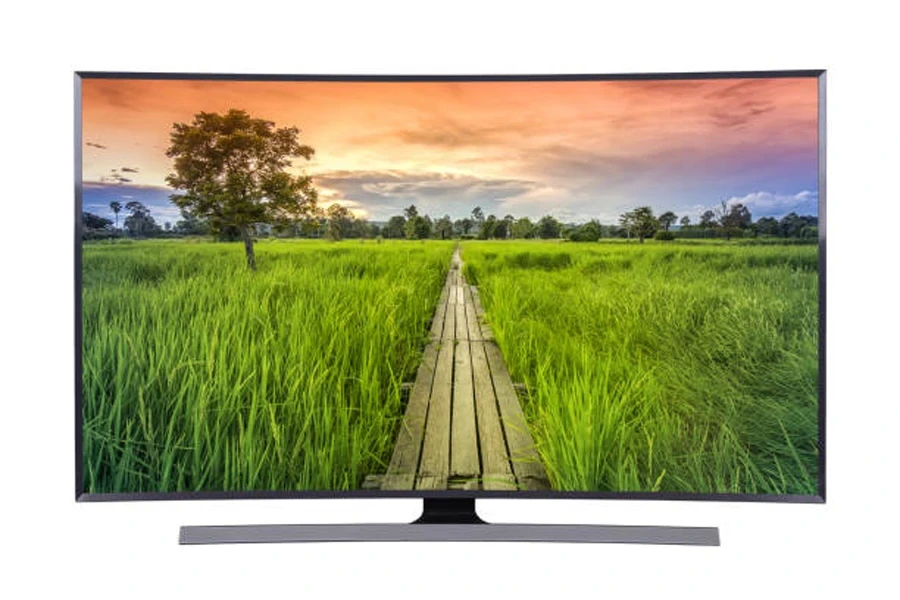
Current Market Overview
Market Trends in 2024
Latest Trends and Innovations in the Curved Smart TV Market
The curved smart TV market in 2024 is marked by several key trends and innovations. Manufacturers continue to enhance picture quality and user experience by integrating advanced technologies such as OLED and QD-OLED panels. These innovations offer superior contrast, deeper blacks, and vibrant colors, catering to both high-end and mid-range markets. Additionally, the focus has shifted towards higher brightness levels and better glare reduction technologies, making curved smart TVs more suitable for various lighting conditions. Notably, Samsung and LG remain leaders in this space, with Samsung’s new anti-glare technology and LG’s latest OLED advancements setting benchmarks for the industry.
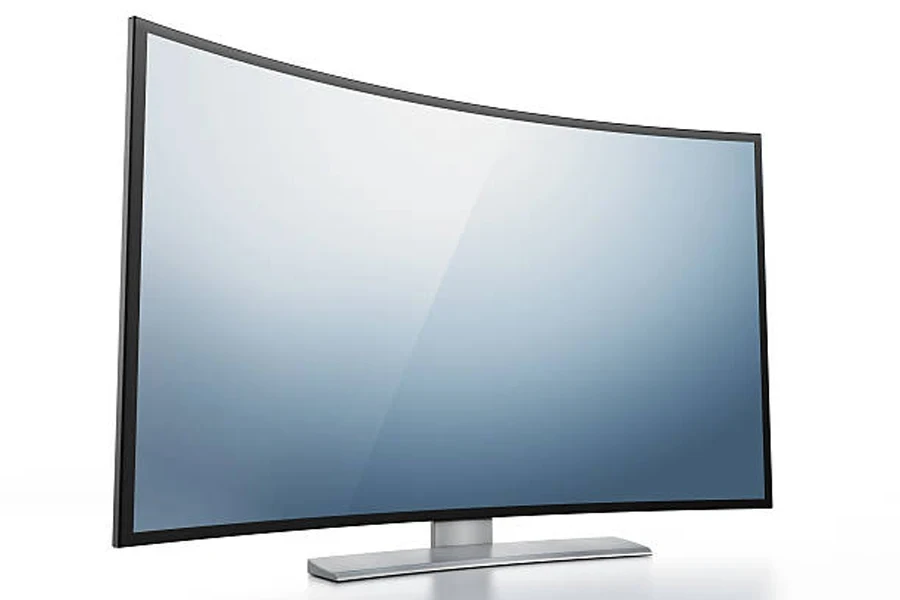
Market Demand and Consumer Preferences
Consumer preferences in 2024 indicate a growing demand for larger screen sizes and higher resolutions. The trend towards 4K and 8K TVs is evident, as consumers seek immersive viewing experiences. There is also a notable increase in the adoption of smart features, with users prioritizing seamless integration with streaming services and smart home devices. Curved smart TVs, while not as ubiquitous as their flat counterparts, continue to attract a niche market that values the immersive experience and aesthetic appeal. This segment includes both home entertainment enthusiasts and businesses looking to enhance their visual presentations and digital displays.
Market Data and Statistics
Sales Data and Growth Projections
The global TV market has shown steady growth, with significant contributions from the high-end curved TV segment. According to recent market analysis, the sales of OLED and QD-OLED TVs have increased by approximately 15% year-over-year, driven by advancements in display technology and rising consumer expectations. Samsung and LG collectively hold a substantial market share, with Samsung leading in overall sales and LG dominating the OLED segment. Projections for 2024 suggest continued growth, particularly in the premium TV market, as more consumers and businesses invest in high-quality displays.
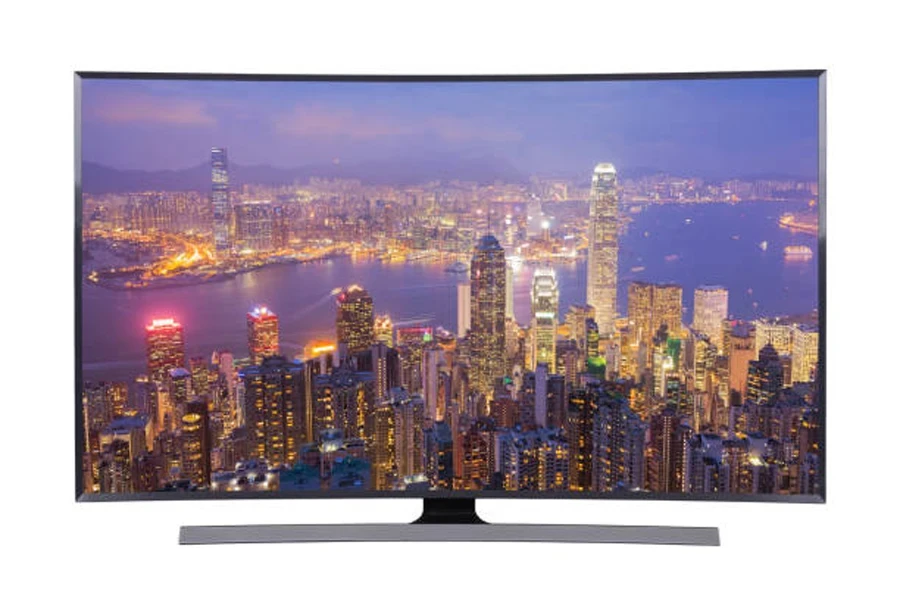
Key Players in the Market
Samsung and LG continue to dominate the curved smart TV market. Samsung’s latest models, such as the S90C and S95C, have been praised for their brightness and color accuracy, making them top choices for both home and professional settings. LG’s G3 and C3 OLED models are also highly regarded for their picture quality and advanced features. Other notable players include Sony, Hisense, and TCL, which have made significant strides in offering high-quality, cost-effective alternatives. Sony’s focus on image processing and sound quality, Hisense’s advancements in mini-LED technology, and TCL’s competitive pricing have all contributed to their growing presence in the market.
In summary, the curved smart TV market in 2024 is characterized by significant technological advancements, a shift towards higher resolutions and smart features, and robust competition among leading brands. These trends reflect a dynamic market that continues to evolve to meet the demands of both consumers and businesses.

Key Factors to Consider When Selecting a Curved Smart TV
Screen Size and Resolution
Importance of Screen Size and Its Impact on Viewing Experience
Screen size plays a critical role in the viewing experience of a curved smart TV. Larger screens tend to offer a more immersive experience, which is one of the primary benefits of curved designs. A screen size of at least 55 inches is generally recommended for rooms where multiple viewers are present, as it ensures that the curvature benefits everyone. Larger screens also enhance the perceived depth and field of view, making movies and presentations more engaging and visually appealing.
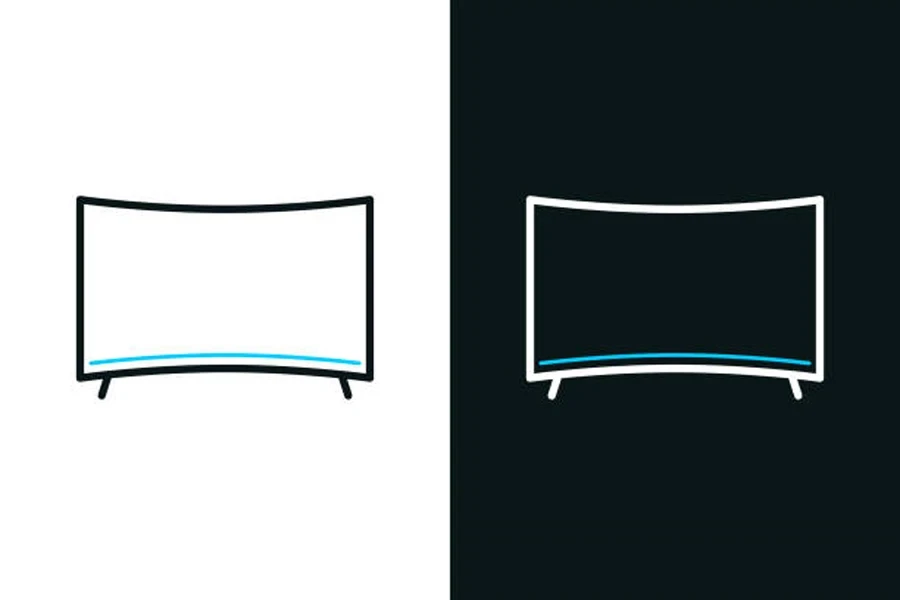
Differences Between 4K and 8K Resolution
When it comes to resolution, 4K and 8K options are prevalent in the market. 4K resolution, with its 3840 x 2160 pixels, provides a high level of detail and clarity, making it suitable for most applications, from home entertainment to professional use. 8K resolution, offering 7680 x 4320 pixels, significantly enhances picture sharpness and detail, especially beneficial for large screens. However, 8K content is still relatively scarce, and the benefits are more pronounced on very large displays, typically above 65 inches. The choice between 4K and 8K should consider content availability, viewing distance, and budget.
Brightness and Contrast
How Brightness Levels Affect Visibility in Different Lighting Conditions
Brightness is a crucial factor for visibility, particularly in well-lit environments. Higher brightness levels ensure that the screen remains visible and vibrant even under direct light, which is essential for both home and office settings. TVs with advanced technologies like mini-LED backlighting can achieve higher brightness levels, making them suitable for bright rooms. For instance, the Hisense U8K and Samsung QN90C are known for their high brightness and are ideal for spaces with significant ambient light.
Importance of Contrast Ratios for Picture Quality
Contrast ratio, the difference between the darkest blacks and the brightest whites a TV can display, is vital for picture quality. A higher contrast ratio results in more detailed and dynamic images, enhancing the overall viewing experience. OLED TVs, such as the LG G3 and Samsung S95C, excel in delivering near-infinite contrast ratios due to their ability to turn off individual pixels. This feature is particularly beneficial for viewing high-contrast content like movies and video games, providing a more immersive experience.
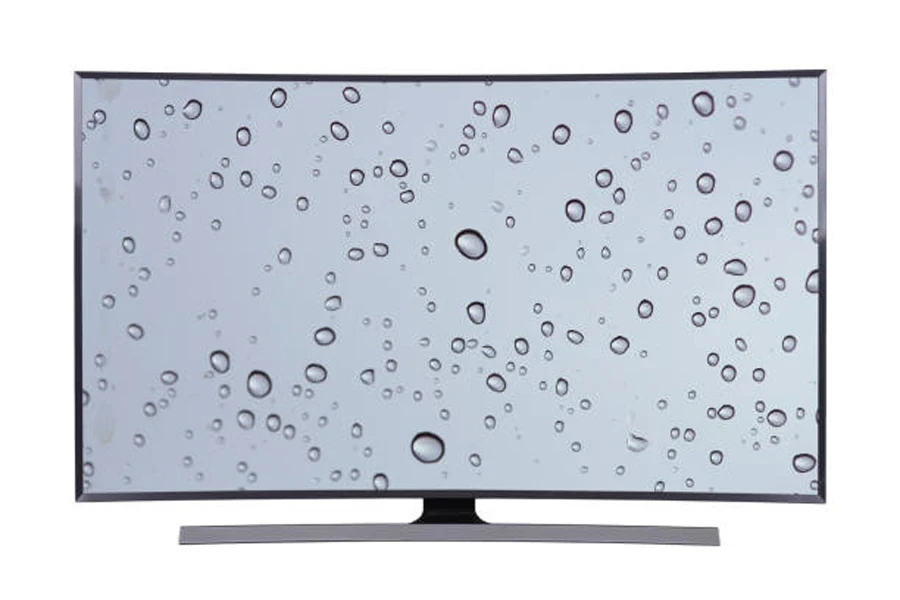
Color Accuracy and Refresh Rate
Role of Color Accuracy in Professional and Entertainment Settings
Color accuracy is essential for both professional presentations and entertainment. Accurate colors ensure that the content is displayed as intended, which is crucial for visual content such as marketing materials and multimedia presentations. TVs with technologies like Quantum Dot (QD) and HDR support offer superior color accuracy. For example, Samsung’s QD-OLED technology enhances color precision and vibrancy, making models like the Samsung S90C ideal for various applications.
Benefits of Higher Refresh Rates for Smooth Motion
A higher refresh rate, measured in Hertz (Hz), improves the smoothness of motion on screen. This is particularly important for fast-paced content like sports and action movies, as well as for gaming. TVs with refresh rates of 120Hz or higher, such as the Samsung S95D, offer smoother transitions and reduced motion blur, enhancing the viewing experience. Additionally, features like Variable Refresh Rate (VRR) and Auto Low Latency Mode (ALLM) are beneficial for gaming, providing a seamless and responsive experience.
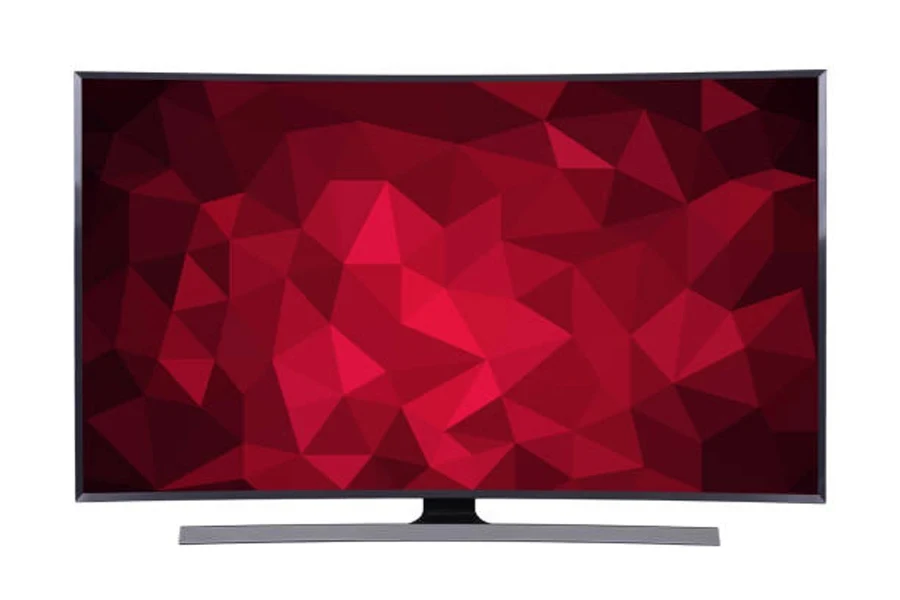
Smart Features and Connectivity
Essential Smart Features to Look For
Modern smart TVs come with a variety of features that enhance usability and functionality. Key features to consider include voice control, integration with smart home ecosystems, and access to a wide range of streaming services. Platforms like Google TV and Tizen offer intuitive interfaces and extensive app support. The ability to control the TV using voice assistants like Google Assistant or Amazon Alexa adds convenience, especially in professional settings.
Connectivity Options and Compatibility with Other Devices
Connectivity options are crucial for integrating the TV with other devices. Multiple HDMI ports, including HDMI 2.1, ensure compatibility with the latest gaming consoles and AV equipment. Other essential ports include USB for media playback, Ethernet for stable internet connections, and audio outputs for external sound systems. Wireless connectivity options like Wi-Fi and Bluetooth are also important for seamless integration with other smart devices and peripherals.
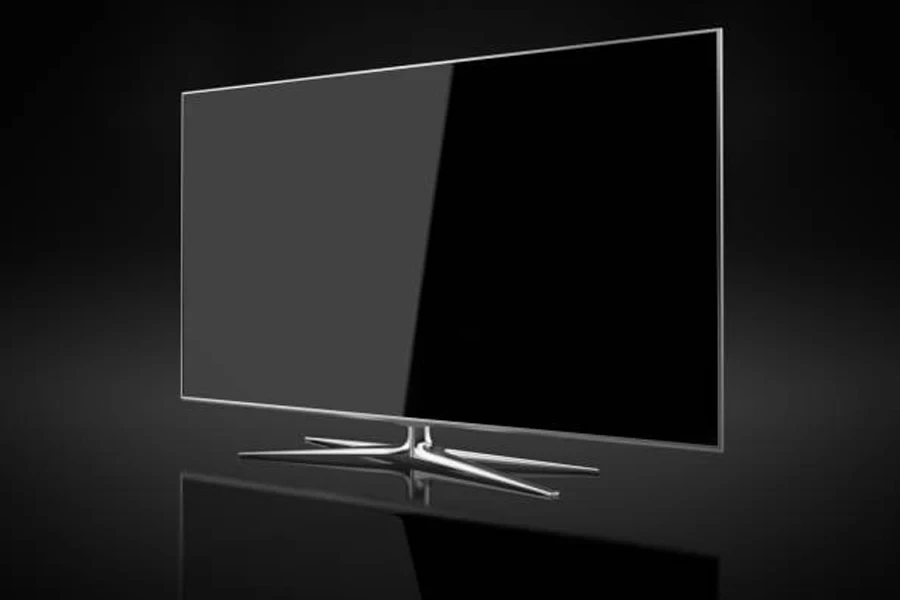
Price and Value
Balancing Cost with Features and Performance
When selecting a curved smart TV, it’s important to balance cost with features and performance. Higher-end models, such as the LG G3 and Samsung S95C, offer premium features and exceptional picture quality but come at a higher price. Mid-range models like the Hisense U8K provide excellent performance at a more affordable cost, making them a good choice for those who want high quality without breaking the bank.
Evaluating Long-Term Value and Durability
Evaluating the long-term value involves considering both the initial cost and the longevity of the TV. Durable construction, reliable performance, and future-proof features like 8K readiness and multiple HDMI 2.1 ports add to the long-term value. Additionally, considering the warranty and customer support provided by the manufacturer can offer peace of mind and protect the investment.
By carefully considering these factors, businesses can select the curved smart TV that best meets their needs, ensuring an optimal balance of performance, features, and value.
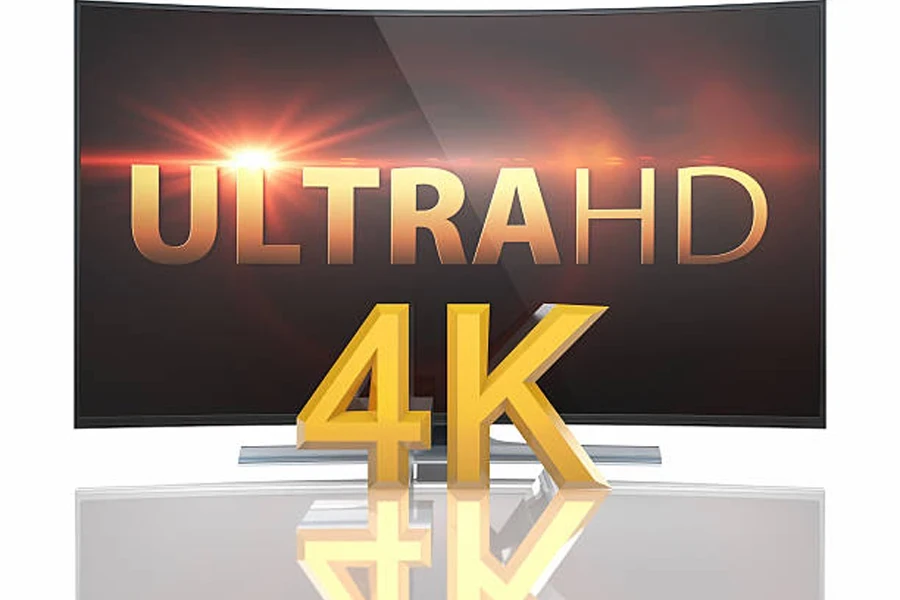
Leading Curved Smart TV Models of 2024
Top Picks
LG G3 OLED TV: Exceptional Picture Quality and Brightness
The LG G3 OLED TV stands out with its exceptional picture quality and brightness. Utilizing OLED technology, it delivers perfect black levels and a near-infinite contrast ratio, providing an unparalleled viewing experience. The G3’s high brightness and advanced color accuracy make it ideal for various professional and entertainment settings. Additionally, its slim design and minimal bezel ensure it blends seamlessly into any environment.
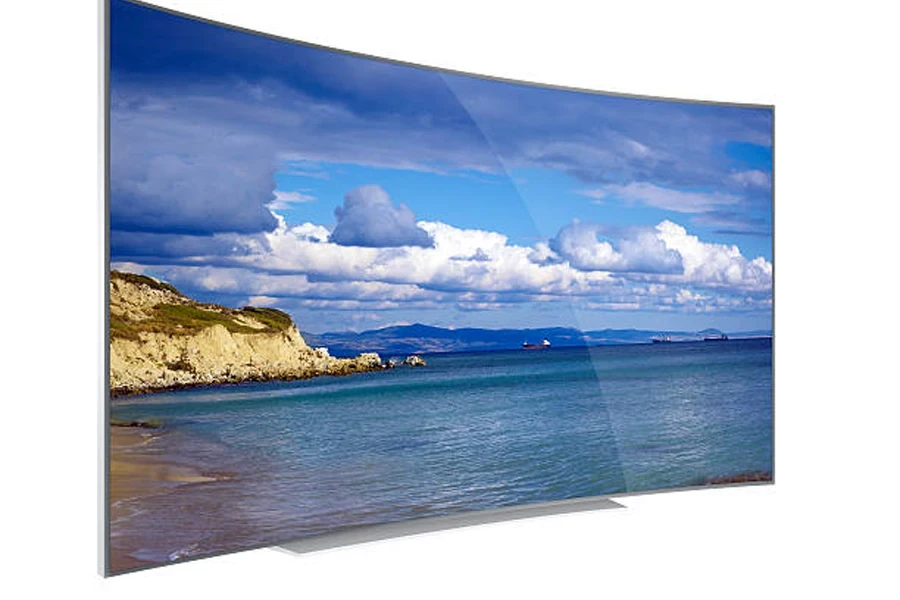
Samsung S90C TV: Best-in-Class Color Accuracy and Refresh Rate
The Samsung S90C TV is renowned for its superior color accuracy and high refresh rate. Equipped with QD-OLED technology, the S90C offers vibrant colors and deep blacks, enhancing both visual quality and immersive experience. Its 144Hz refresh rate makes it particularly suitable for gaming and fast-paced content, ensuring smooth and clear motion. The S90C also includes advanced smart features and multiple connectivity options, making it a versatile choice for modern businesses.
Hisense U8K: Outstanding Brightness and Value
The Hisense U8K is a top contender for those seeking excellent brightness and value. This model features mini-LED technology, providing high peak brightness and impressive contrast. The U8K’s affordability combined with its performance makes it a strong option for both professional and home settings. Its wide color gamut and HDR support ensure rich and detailed visuals, suitable for various applications from presentations to movies.
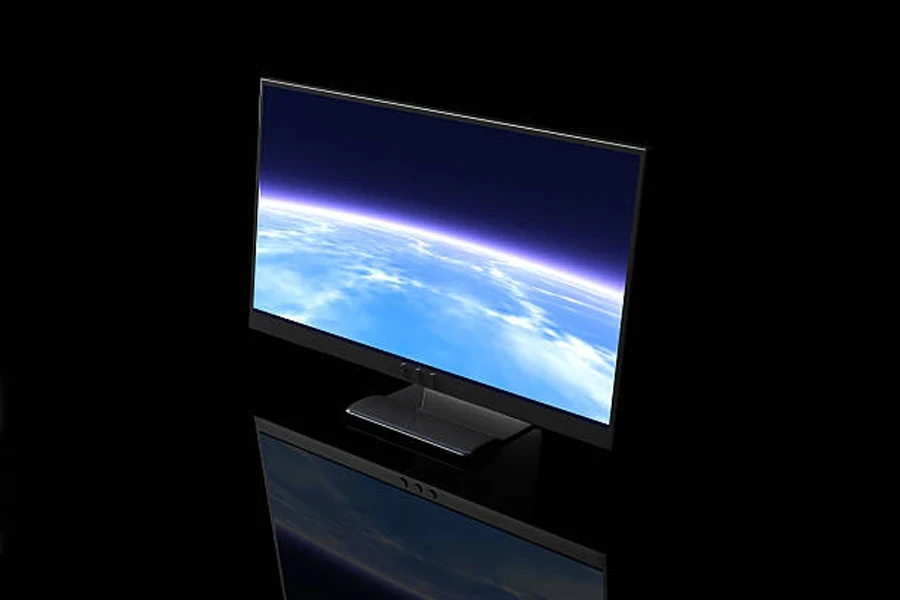
TCL QM8: Ideal for Bright Rooms with Excellent Response Time
The TCL QM8 is designed for environments with significant ambient light, offering high brightness and excellent response times. It uses QLED technology with full-array local dimming, enhancing contrast and color accuracy. The QM8’s fast response time makes it an excellent choice for gaming and dynamic content. Its affordability and robust feature set make it a practical option for businesses looking to upgrade their visual display capabilities without a significant investment.

Features and Specifications
Detailed Analysis of Each Model’s Key Features
The LG G3 OLED TV’s standout features include its near-infinite contrast ratio and perfect black levels, thanks to OLED technology. This results in highly detailed and vibrant images, making it ideal for presentations and high-quality video content. Its slim profile and minimal bezel design add to its aesthetic appeal, fitting well in any professional environment.
The Samsung S90C TV excels in color accuracy and refresh rate. The QD-OLED technology provides vibrant colors and deep blacks, while the 144Hz refresh rate ensures smooth motion, essential for gaming and fast-paced videos. The S90C also features advanced smart functionalities and multiple HDMI 2.1 ports, enhancing its connectivity and versatility.
The Hisense U8K is noted for its high brightness levels, made possible by mini-LED technology. This feature makes it suitable for bright rooms, ensuring clear visibility regardless of lighting conditions. The U8K also offers excellent value, combining affordability with performance, making it a popular choice for various settings.
The TCL QM8’s high brightness and fast response times are its key features. The QLED technology and full-array local dimming enhance color accuracy and contrast, while the quick response times benefit gaming and dynamic content. Its competitive pricing and comprehensive feature set make it a strong contender in the curved TV market.
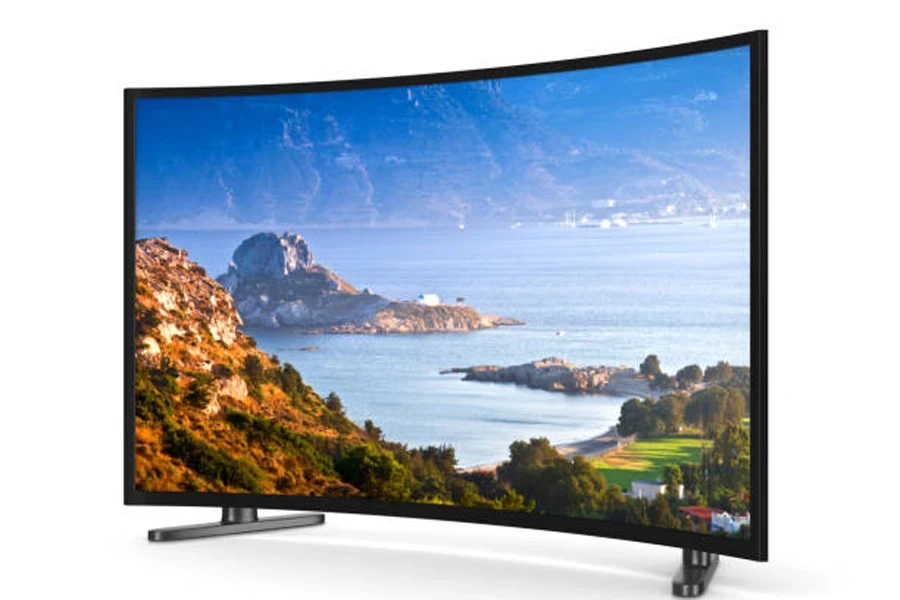
Comparisons to Help in Decision-Making
When comparing these models, the LG G3 OLED TV offers the best overall picture quality with its perfect black levels and contrast. The Samsung S90C TV, with its superior color accuracy and high refresh rate, is ideal for gaming and fast-paced content. The Hisense U8K provides the best value for those needing high brightness and affordability, while the TCL QM8 is tailored for bright environments and fast-response requirements.
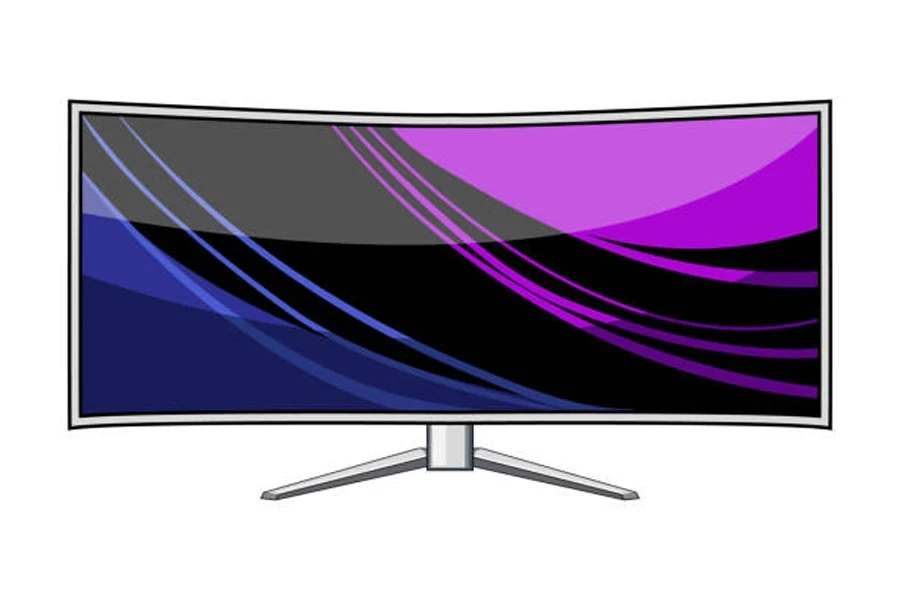
Expert Recommendations
Expert Opinions and Reviews on the Top Models
Experts highly recommend the LG G3 OLED TV for its exceptional picture quality and aesthetic design, making it suitable for professional presentations and high-end home entertainment. The Samsung S90C TV is praised for its color accuracy and gaming capabilities, with experts noting its advanced technology and comprehensive smart features.
The Hisense U8K receives positive reviews for its brightness and value, deemed a practical choice for those needing a high-performing yet affordable TV. The TCL QM8 is recommended for its suitability in bright rooms and fast response times, ideal for both gaming and professional use.
Usage Scenarios and Best Use Cases for Each Model
The LG G3 OLED TV is best used in settings where picture quality and aesthetic integration are paramount, such as executive boardrooms and high-end home theaters. The Samsung S90C TV is ideal for environments requiring high color accuracy and smooth motion, including gaming lounges and multimedia presentation spaces.
The Hisense U8K is suitable for bright office spaces and home environments where budget considerations are important without compromising on performance. The TCL QM8 is perfect for areas with significant ambient light and for users who prioritize fast response times, making it a great choice for gaming and dynamic content viewing.
By considering these top models and their features, businesses can select the curved smart TV that best fits their needs, ensuring an optimal blend of performance, features, and value.
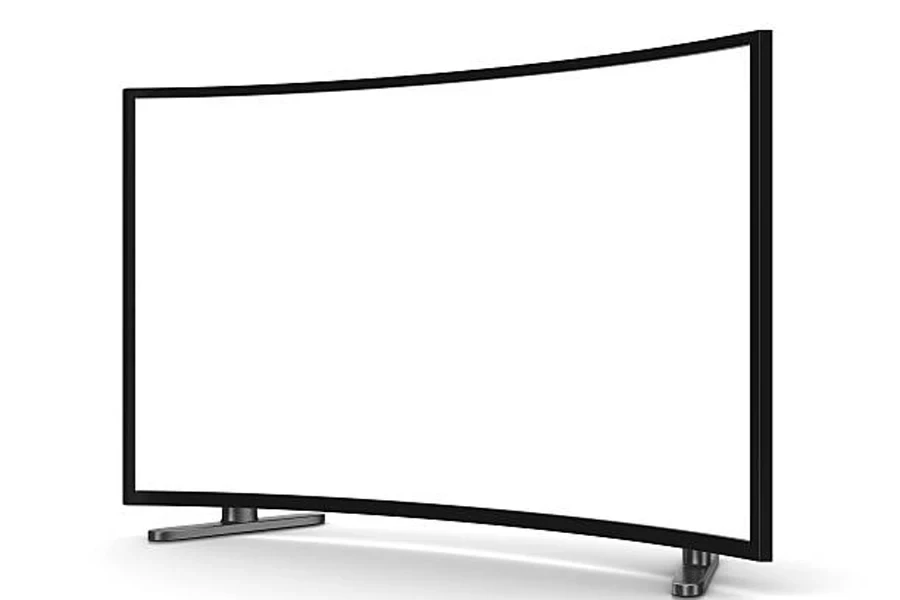
Conclusion
Selecting the best curved smart TV in 2024 requires a deep understanding of the latest trends, technological advancements, and key features that impact performance and value. By focusing on factors such as screen size, resolution, brightness, contrast, color accuracy, refresh rate, smart features, and connectivity, businesses can make informed decisions that enhance their visual display capabilities. The top models, including the LG G3 OLED, Samsung S90C, Hisense U8K, and TCL QM8, offer a range of features tailored to various professional needs. Staying informed about market trends and customer preferences is essential for selecting products that meet both current and future demands.

